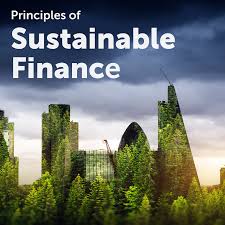
12. Sustainable Finance
Sustainable Finance
Introduction
In the ever-evolving landscape of Sustainable finance, sustainability has emerged as a driving force, reshaping investment strategies and industry norms. The urgency to address climate change has given rise to innovative approaches within sustainable finance, pushing the boundaries of traditional investment models. This blog aims to delve into the cutting-edge sustainable finance innovations that are not only aligning financial strategies with environmental goals but are also playing a pivotal role in shaping the future of the financial industry.
1. Green Bonds and Sustainability-Linked Loans
Green bonds and sustainability-linked loans are at the forefront of sustainable finance, providing investors with powerful tools to direct funds towards environmentally friendly projects. Green bonds, a form of debt where the proceeds fund projects with clear environmental benefits, are gaining popularity. They finance a range of initiatives, from renewable energy projects to sustainable infrastructure.
Sustainability-linked loans, on the other hand, tie the interest rates of loans to a company’s sustainability performance. This innovative structure incentivizes companies to adopt and maintain responsible business practices. The concept aligns the financial interest of borrowers and lenders with broader environmental objectives, fostering a more sustainable economy.
2. Decentralized Finance (DeFi) and Sustainability
The decentralized finance (DeFi) space, known for its blockchain-based financial applications, is now extending its reach into sustainable finance. DeFi platforms are exploring ways to incorporate eco-friendly practices into their operations. Blockchain technology, the backbone of DeFi, offers transparency and traceability in supply chains, ensuring that sustainable practices are adhered to at every step.
Smart contracts, a key feature of blockchain, can be programmed to enforce sustainability criteria in financial transactions. This not only ensures that funds are directed towards environmentally responsible projects but also provides a level of transparency and accountability previously unseen in traditional finance.
3. Natural Capital Investing
Natural capital investing represents a paradigm shift in how we perceive and value ecosystems. This innovative approach involves investing in the services provided by ecosystems, such as clean water provision, biodiversity, and carbon sequestration. By recognizing the economic value of these services, investors contribute to conservation efforts while also seeking financial returns.
Natural capital investing requires a deep understanding of the interconnectedness of environmental systems. Investors, in collaboration with scientists and conservationists, can identify opportunities that benefit both ecosystems and their financial portfolios. This symbiotic relationship between finance and the natural world is a groundbreaking development within sustainable finance.
4. Carbon Offsetting and Carbon Markets
Carbon offsetting and carbon markets have become central players in the global effort to achieve carbon neutrality. Companies and individuals alike are seeking ways to offset their carbon emissions by investing in projects that reduce or capture an equivalent amount of carbon dioxide. This has given rise to a market for carbon credits, which can be bought and sold.
Investors in carbon markets not only contribute to environmental initiatives but also engage in a new frontier of financial instruments. The trading of carbon credits provides a financial incentive for companies to adopt cleaner practices, creating a market-driven approach to carbon reduction.
5. Impact Investing and Beyond
Impact investing, once considered a niche concept, has evolved beyond its initial stages. Beyond seeking financial returns, impact investors aim to generate positive societal and environmental impacts. This involves investing in companies and projects that demonstrate measurable outcomes in areas such as social justice, environmental conservation, and community development.
The development of standardized impact metrics is a significant milestone in the evolution of impact investing. These metrics allow investors to quantify the social and environmental benefits of their investments, providing a clearer understanding of the real-world impacts. As impact investing becomes more mainstream, it is influencing investment decisions across various sectors, making it a transformative force within sustainable finance.
Conclusion
Sustainable finance innovations are not just reshaping investment strategies; they are redefining the very purpose of finance. From green bonds to decentralized finance solutions, the financial industry is embracing sustainability as a core principle. As these innovations continue to mature, they will play a crucial role in steering the global economy towards a more sustainable and resilient future. Staying informed and actively engaging with these developments allows investors and financial professionals to contribute to a greener, more sustainable world while fostering economic growth.
Leave a Reply